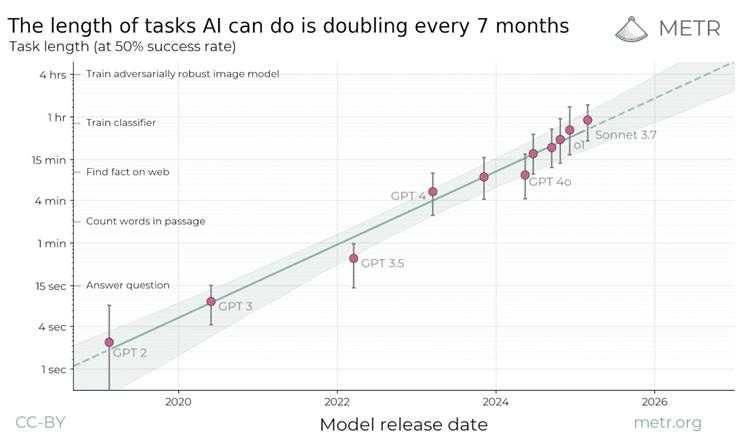The State of AI Agents
A recap of the progress on AI agents. Thanks to better AI ecosystem and standards, AI Agents are now production-ready and here to stay.
Recap of AI Agent Progress
AI Changes Everything has been steadily adding more subscribers, so to those who are relatively new here, thank you for joining our audience.
One of the main trends I’ve been writing about this year has been the rise of AI Agents, so for the new subscribers, and even for our long-time readers, I’d like to share where we are with AI agents by recapping previous articles on AI agent progress.
The AI Agent Platform Shift
The AI Agent platform shift is refactoring how we use AI and expanding what AI can do for us. The development of AI reasoning has boosted the capabilities AI models to perform agentic AI, leading to new innovative AI applications like LM Notebook, Deep Research, AI computer use and improved generalist AI Agents like Manus, released in March, and a flood of other improved agentic AI systems.
Before we move on, let’s note that the terms AI agent, agentic AI, AI workflows and AI agent systems have similar and overlapping meanings, all around AI systems and applications.
In “Design Patterns for Effective AI” we discussed distinctions between AI agents and AI workflows, sharing our definition of AI agent as well as Anthropic’s distinctions between AI workflows - AI executing a pre-defined fixed workflow - and AI agent - AI system that dynamically directs and executes processes and tool usage.
In our terminology, AI Agents are systems capable of performing tasks dynamically and autonomously or either a fixed or dynamic workflow; the key feature of an AI agent is autonomy.
Agentic AI systems are intelligent systems that combine AI models with additional capabilities to perform tasks with minimal human oversight. This broader term covers AI applications that have agentic (i.e., automation) capabilities yet are more than an AI agent. Consider an AI-assistant embedded in a word processor or coding editor. It’s not an AI agent per se, but it has agentic features.
The AI Agent Ecosystem
One theme has been the growing and improving AI Agent ecosystem, instrumental to working AI Agents. Frameworks such as LangChain, CrewAI, and Autogen have supported the building of AI agents and AI applications since 2023, but recent standards have boosted AI agent development.
Released in December 2024, Anthropic’s Model Context Protocol (MCP) has become the open industry standard for connecting AI models to data and tools. It has taken over, and now there are thousands of MCP servers helping give AI models and AI agents access to tools.
In March, OpenAI released built-in tools and Responses API to further boost tool integration with its AI models.
In April, Google announced the Agent2Agent protocol.
In May, Mistral's Agents API further expanded AI agent interoperability and tool use. This followed Anthropic and OpenAI updating their APIs for agentic AI applications as well.
In August, the Agents.md standard has unified the systems instructions used for AI agents.
The latest AI models, such as GPT-5, Claude 4, Claude Opus 4.1, and GLM-4.5, are increasingly trained for Agentic AI tasks, including tool calling and AI coding.
When it comes to building AI agents, one key design element is the workflow the AI agent supports. Different tasks require their own distinct workflows, and there are specific design patterns for effective AI agents to cover different types of workflows. Frameworks such as LangGraph can support pre-defined workflows, but AI agents can support feedback-driven dynamic workflows.
Anthropic recently developed a framework for developing safe and trustworthy agents.
AI Agent Interfaces and Context Engineering
Running AI agents requires a different way of interacting from AI chatbots. Where AI chatbots answer questions, AI agents perform tasks. Context Engineering is the new Prompt Engineering:
You need to set up the entire context – the AI model’s memories, prompt instructions, supporting knowledge and information, and relevant tools – to help the AI model complete the task.
What to put into the context? Give the AI agent task specifications and required background information.
For example, to get production software out of AI coding tools, drive the AI coding agent with software specifications:
Vibe-coding with AI speeds software app creation but is a recipe for technical debt. Spec-driven AI coding solves that dilemma, creating well-made software in fast development cycles.
Broadening Agentic AI Use Cases
AI agents are getting much better, very quickly, going from toys in 2023 to primitive beta tools in 2024 and now to production AI systems in 2025. According to METR’s benchmarks, the length of the human-equivalent task the AI agents can do without needing human guidance is doubling every 7 months.
As the AI agent ecosystem has matured, AI agents have gotten better, and agentic AI use cases have broadened. First uses of AI reasoning models in AI agents was deeply useful Deep Research and AI coding agents. Now we have many recent new AI agent releases and added features improving AI agents on all fronts:
General AI agents include ChatGPT Agent, released last month, Manus, and open-source alternatives such as Open Hands.
Browsers are getting agentic, with Perplexity Comet AI browser and Claude introducing a Claude Chrome extension.
Manus Wide Research took deep research and parallelized it.
We’ve had a number of command-line coding tools following in footsteps of ClaudeCode, including Gemini CLI, OpenAI’s Codex, and the open source alternative OpenCode.
The OG command-line coding tool ClaudeCode added built-in subagent support, and CharmBracelet open-sourced Crush, a VSCode-inspired CLI coding agent with built-in subagent support.
Conclusion – The Rising AI Agent Tide
I overuse this phrase, but AI progress is not slowing down. Benchmarks that frontier AI models struggled on a year ago are now saturated. AI models have improved significantly on reasoning and tool use. The AI agent ecosystem is far more mature now than a mere 10 months ago, with several standardized protocols, such as MCP, Agent2Agent and Agents.md, supporting interoperability between models and tools and standardized AI agent development.
All these improvements in AI models and their access to tools as well as the improved AI ecosystem overall have enabled the rise of more advanced AI agents and agentic AI applications. The flood of AI agents and AI applications that has resulted has led to a surge in AI usage overall, with usage rising as AI improves.
AI agents are the new AI application layer. Whether stand-alone or infused in other applications, agentic AI is drastically changing how we use software, displacing many other interface forms. This process is just beginning, as we are just starting to get AI browser agents barely good enough to be useful.
Overtime, all software will become AI-first, with agentic AI embedded in the software and supporting our interactions with software and in some cases AI agents displacing software and interfaces entirely. Creative and novel form factors for agentic AI in software may yet emerge.
The bottom-line on where AI agents stand: With improved AI ecosystem for AI agents and better AI models, AI agents this year have become incredibly useful in work and personal life. AI agents are just getting started, and they are here to say.
Relevant questions we might followup and ask are: How can we best use AI Agents effectively? What are the best AI applications to use in each category? We will be answering these and similar questions in subsequent articles. Comment if you’d like specific AI agent questions answered or topics covered.




Thanks for sharing! It’s a great update!